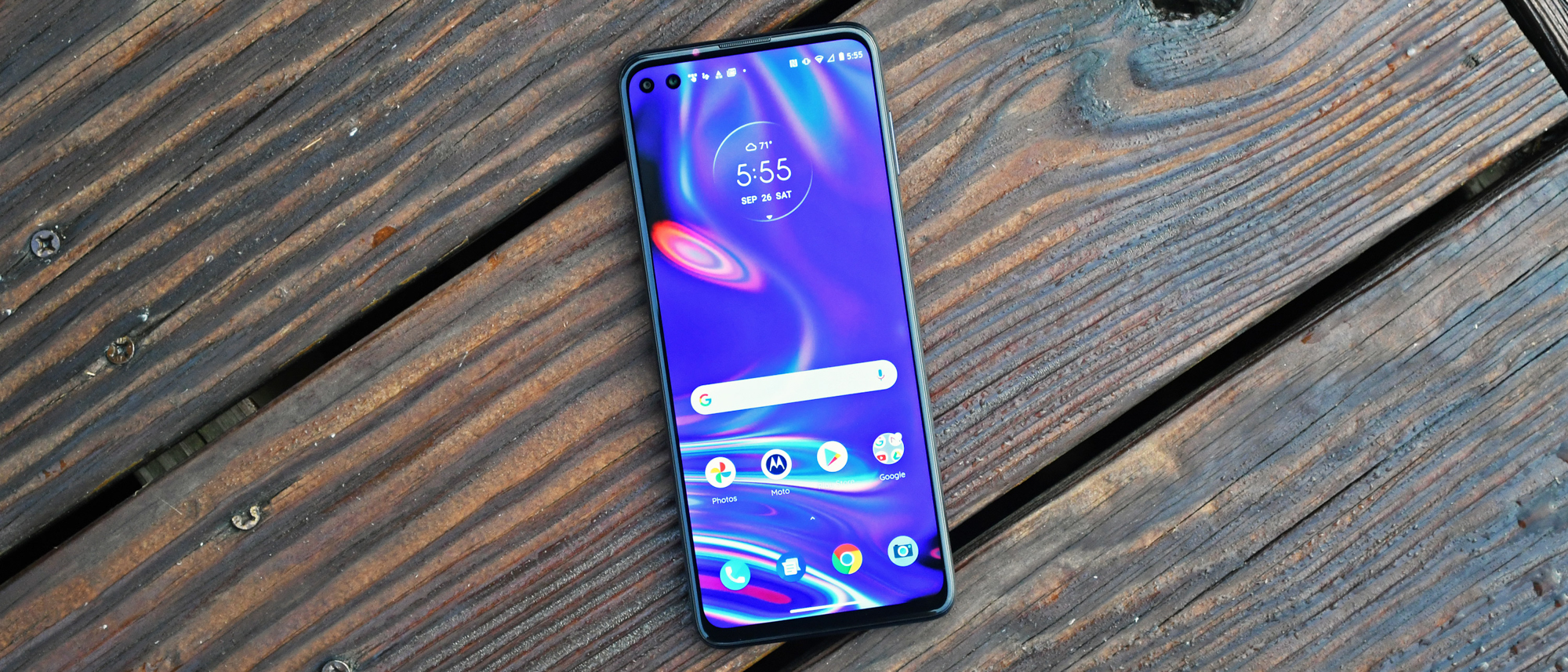Tom's Guide Verdict
The Motorola One 5G offers decent performance and 5G connectivity for a lower price compared to other 5G phones. But compromises in practically every other category make it one of the less-compelling mid-range 5G phones.
Pros
- +
Reasonably priced
- +
90 Hz refresh rate
- +
Solid performance
Cons
- -
Bulky, ugly plastic design
- -
LCD screen
- -
Lots of bloatware
- -
Disappointing cameras
Why you can trust Tom's Guide
Price: $445
OS: Android 10
Display: 6.7-inch LCD (2520x1080; 90 Hz)
CPU: Snapdragon 765
RAM: 4GB
Storage: 128GB; expandable up to 1TB
Rear camera: Quad-lens: 48MP wide (ƒ/1.8), 8MP ultrawide
(ƒ/2.2), 5MP macro (ƒ/2.2), 2MP depth (ƒ2.2)
Front camera: 8MP (ƒ/2.2), 16MP ultrawide (ƒ/2.2)
Battery: 5,000 mAh
Size: 6.61 x 2.91 x 0.35 inches
Weight: 7.3 ounces
Blink and you might miss the Motorola One 5G. This $445, 6.7-inch behemoth has landed within Motorola’s busiest year in recent memory. The company has launched a slew of Moto E and Moto G-series handsets in addition to the more feature-driven Motorola One line, re-entered the premium space with the Motorola Edge family and plans to deliver not one but two Razr foldables before 2020 is through.
The differences between each offering in this deluge of phones are often slight and hard to parse out, but the Motorola One 5G certainly benefits from the best elevator pitch of the lot: it’s the cheapest 5G phone you can buy in the U.S., save for T-Mobile’s just-launched Revvl 5G.
However, Motorola is far from the only company thrusting itself headstrong into the venue of cheap 5G phones. And amidst the likes of the OnePlus Nord, Samsung Galaxy A51 and A71 5G, LG Velvet, and the upcoming Pixel 4a 5G, the Motorola One 5G simply doesn’t stand out.
Our Motorola One 5G review finds a device that, while powerful, suffers from a cumbersome design, with an unremarkable display, outdated software crippled by bloatware and a gimmicky array of cameras outperformed by the rest of its class.
Motorola One 5G review: Price and availability
The Motorola One 5G is available exclusively through AT&T, where it costs $445. There’s just one configuration, with 128GB of storage and 4GB of RAM, and one color — Oxford Blue.
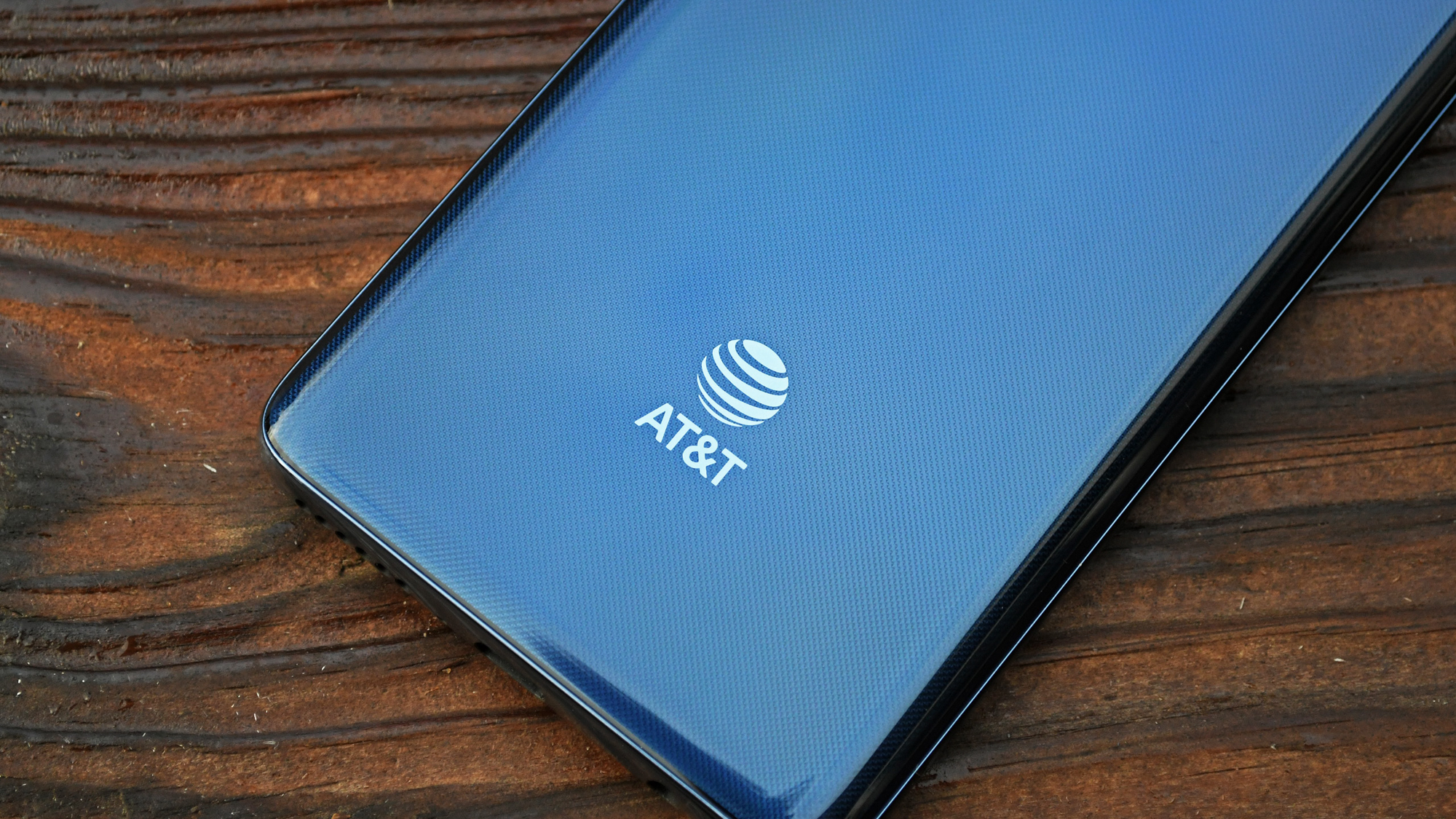
While the AT&T exclusivity is a bummer, the Motorola One 5G’s low price almost makes it the most affordable 5G device on sale in the U.S. at the time this is being written. The Samsung Galaxy A51 5G costs $499, as does the soon-to-ship Google Pixel 4a 5G. TCL has long teased the arrival of its first 5G phone, the TCL 10 5G, with a price under $500, though the company hasn’t elaborated on that since that handset was announced way back in January.
Motorola One 5G review: Design
In previous years, spending less than $500 on a smartphone might have guaranteed a chintzy plastic build and uninspired design. Fortunately, thanks to efforts around the industry — from OnePlus, to Google, to Apple and even Samsung with its latest Galaxy A series devices — that expectation is slowly being eroded.
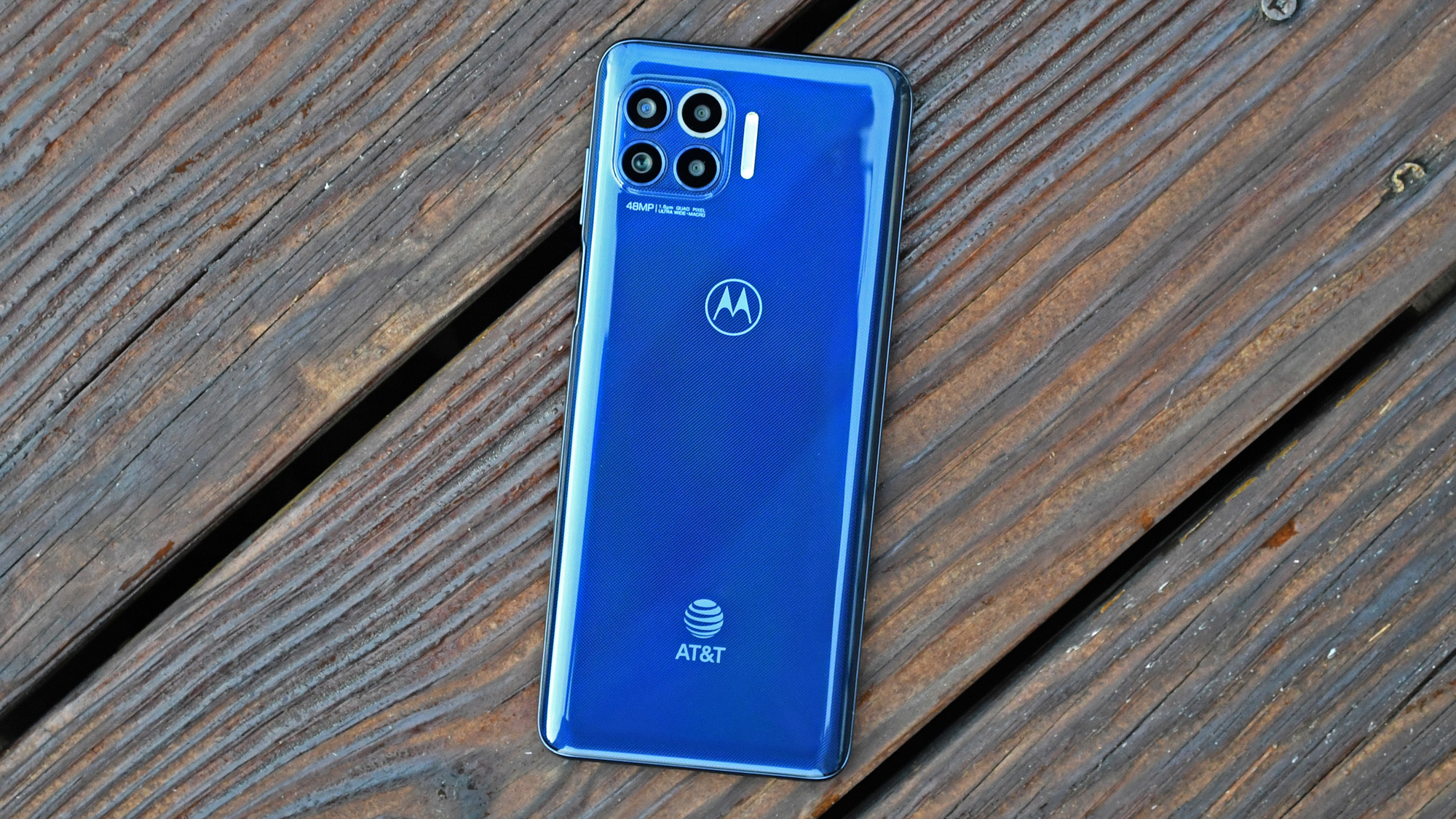
Alas, the Motorola One 5G doesn’t find itself in that elite company. This is a phone that is cheap and certainly feels it, with the entirety of its bulky frame clad in glossy, tacky plastic, and a stippled, iridescent finish on the back that simply tries too hard to catch the eye.
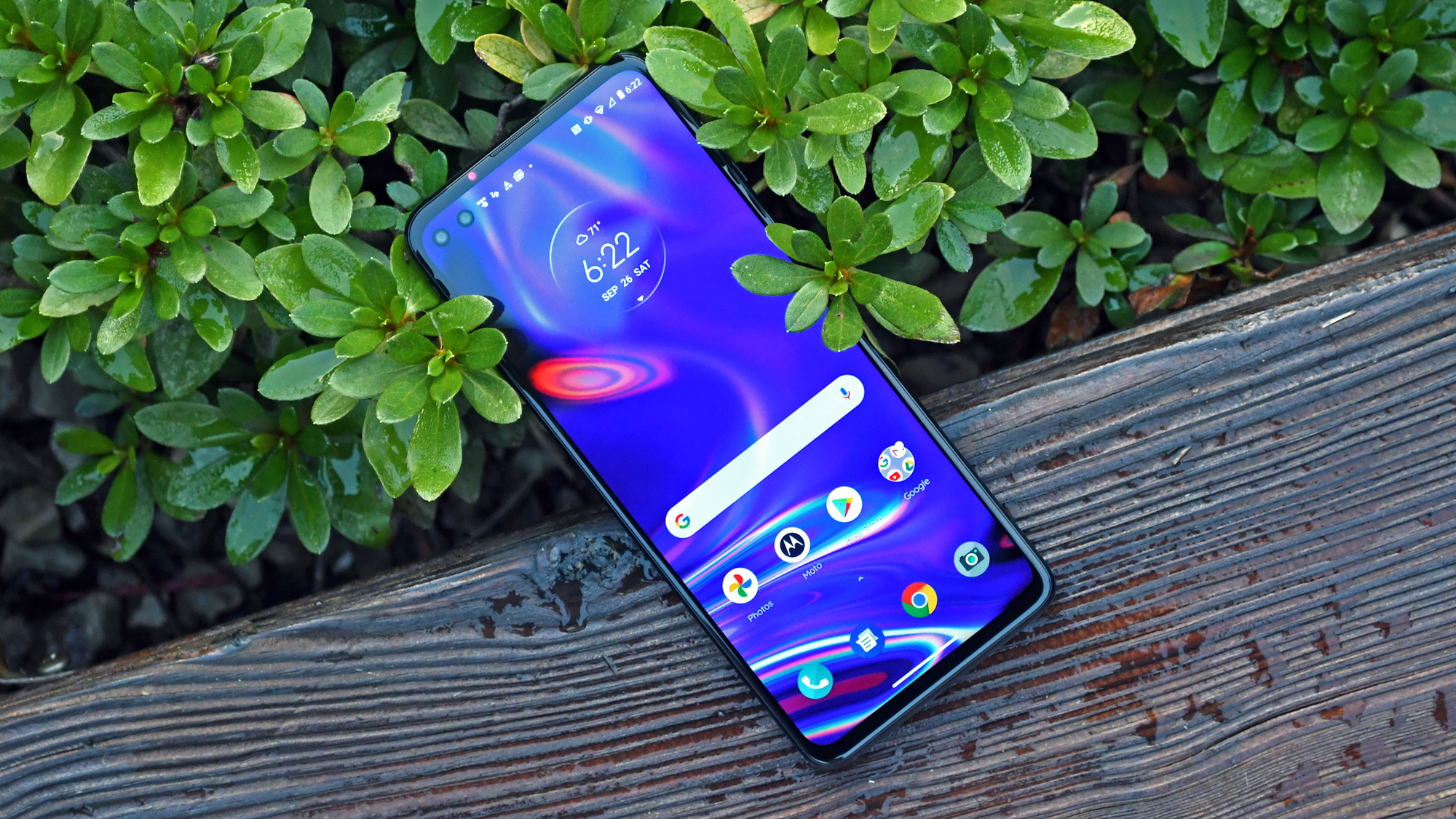
The Motorola One 5G is absolutely gigantic, too. While there have been other 6.7-inch phones before, most of them have been on the pricier side, with slimmer bezels than what you’ll find on this device, as well as curved display glass that helps fit more display into a compact chassis.
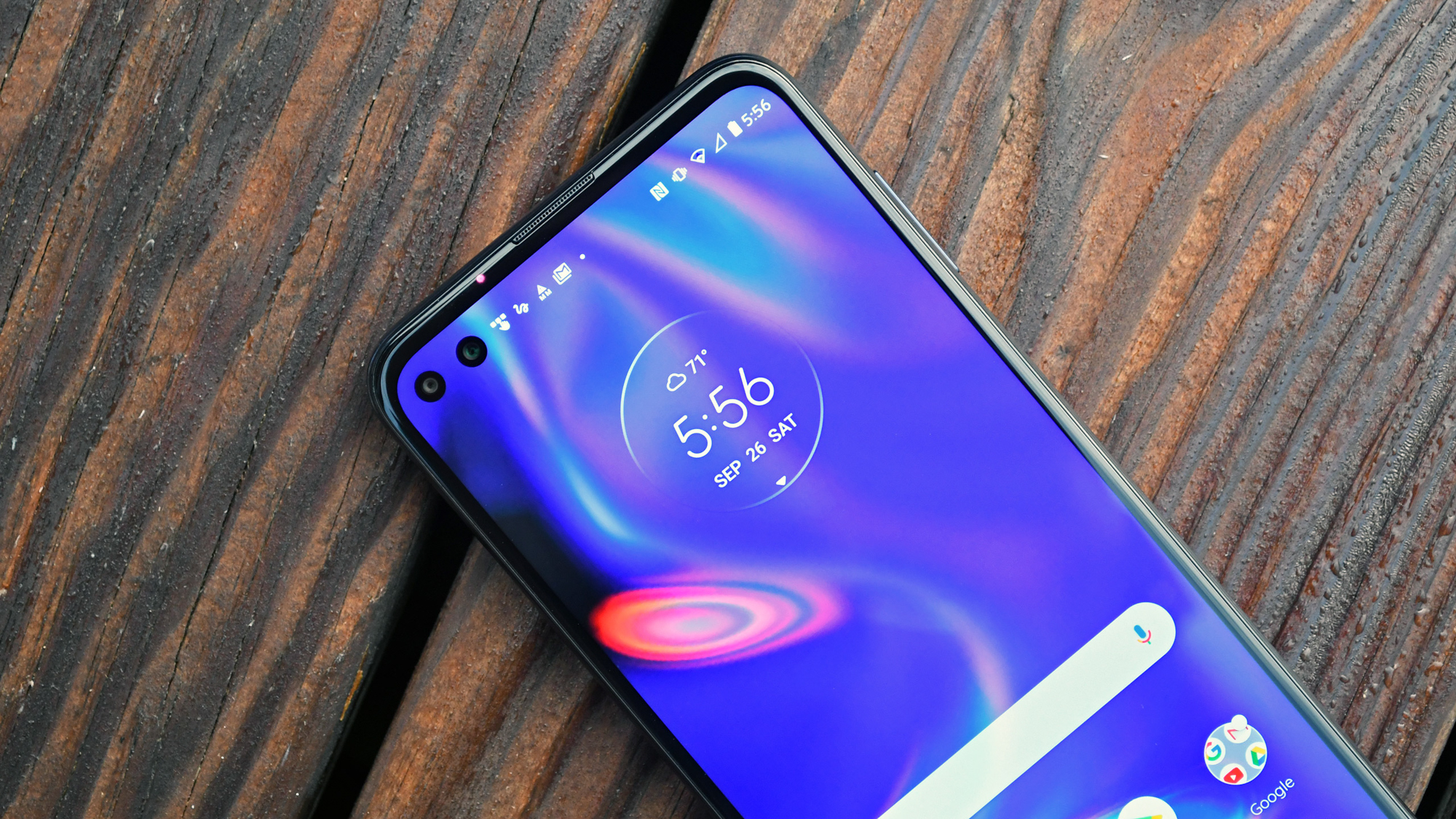
In contrast, the Motorola One 5G does not have a curved screen, and at more than three tenths of an inch thick, it isn’t nearly as slender in hand as the 6.7-inch Galaxy S20 Plus, for example. The phone’s narrow 21:9 aspect ratio does help things a bit, but this is still very much a device that requires two hands to operate. That said, I do like the side-mounted fingerprint sensor and power key, which puts unlocking within easy reach of your thumb (at least if you’re right handed).
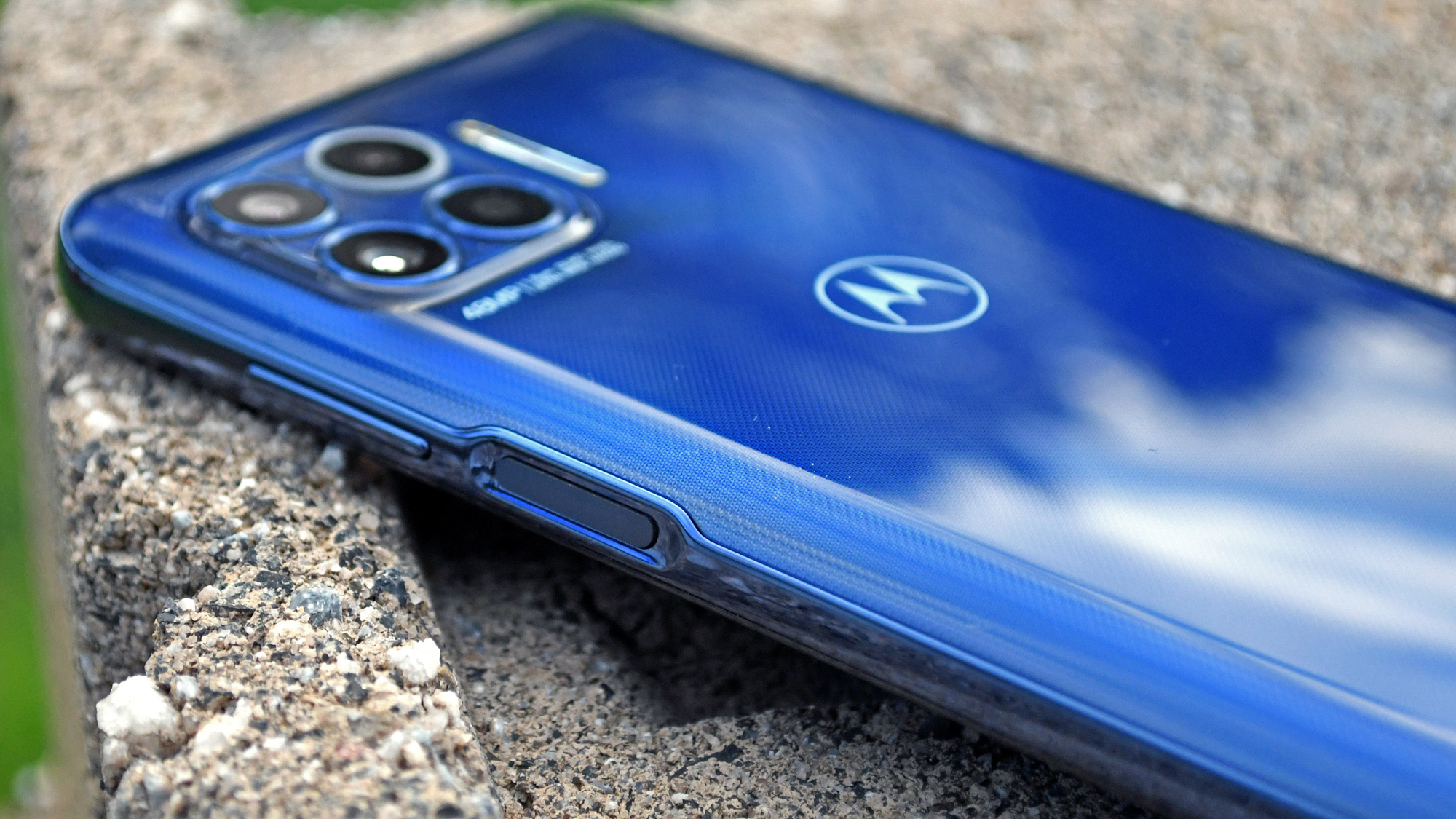
On the front, you’ll find dual hole-punch selfie cameras in one of the stranger in-display implementations we’ve seen as of late. The lenses themselves are separated, rather than joined together in one pill-shaped cutout. Motorola’s approach looks considerably less elegant and takes up a fair bit of space in the upper-left corner. Also, because of design limitations inherent in LCD panels, there’s a noticeable degree of dimming and discoloration around the camera holes that is impossible to unsee on stark white screens.
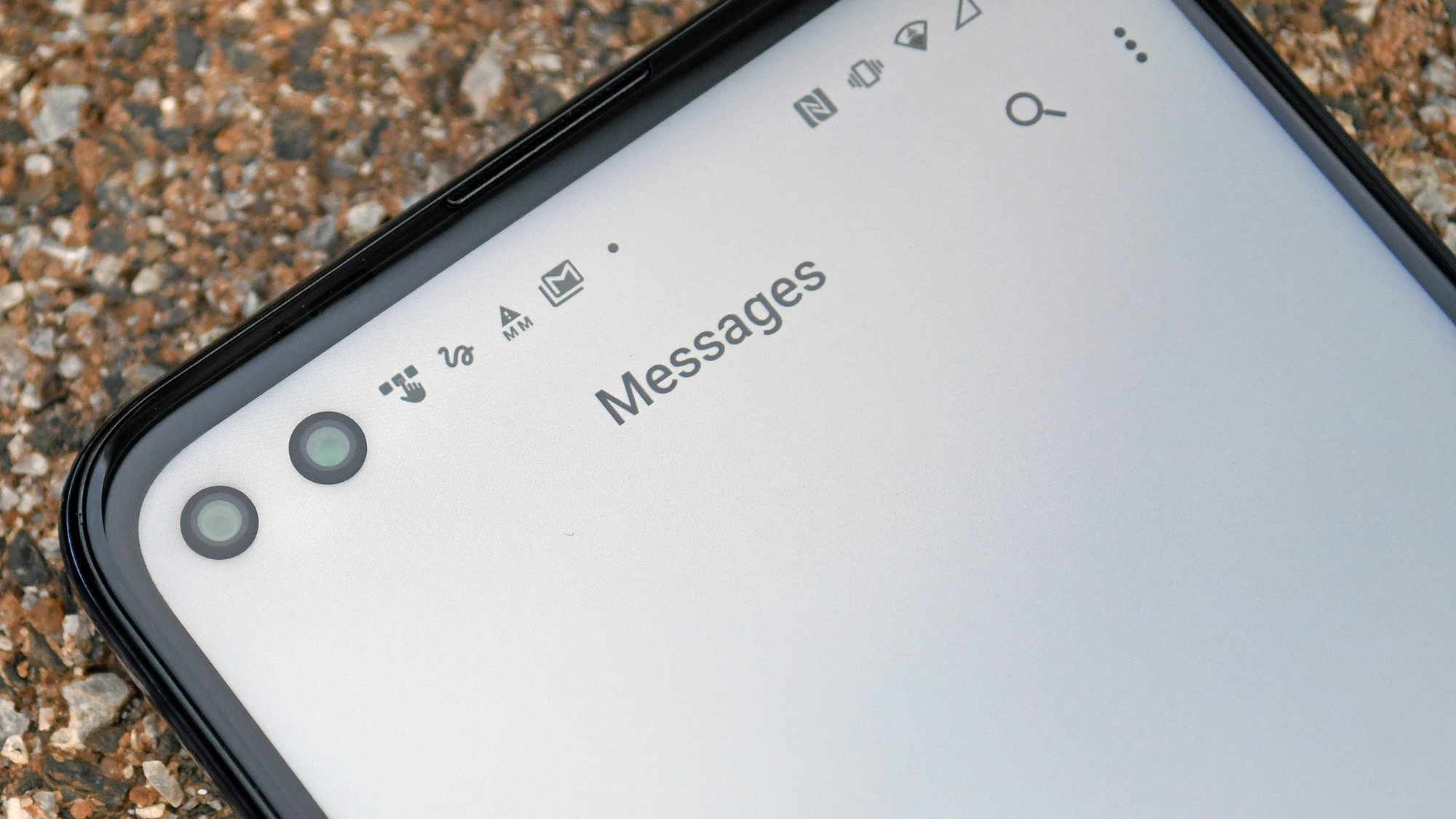
One perk of the Motorola One 5G’s design is its 3.5-millimeter headphone jack, which at least means buyers won’t have to shell out more money on a set of wireless headphones.
Motorola One 5G review: Display
Motorola had to cut costs somewhere to get its cheapest 5G phone down to that sub-$500 price point. As a result,this phone has an LCD screen, as opposed to the OLED panel similarly priced 5G phones features.

Mind you, the Motorola One 5G’s 6.7-inch, full-HD screen boasts a 90Hz refresh rate for smoother animations and scrolling, and comes HDR10 certified to show a greater breadth of color and more detail within bright or dark scenes. However, LCD technology doesn’t power off pixels to show true blacks like OLED panels do, which, in turn, limits the vividity of images.
Case in point: the trailer I watched for season two of The Mandalorian is flush with scenes of a dimly-lit, derelict street in the dark of night. On an OLED panel, the pitch-black sky would blend seamlessly into the bezels of the device, allowing the street lamps and graffiti-scrawled walls to stand out from the background. But the Motorola One 5G’s panel lacks that range, and so these moody setpieces end up looking somewhat muted.
The Motorola One 5G fares better in the brighter moments, like in one part of the same Mandalorian trailer that sees an X-Wing carving through sun-kissed clouds. The HDR10 capability of this panel deftly paints a lush gradient of lavender, cream and gray. But in other scenes, even the most saturated hues don’t quite pop.
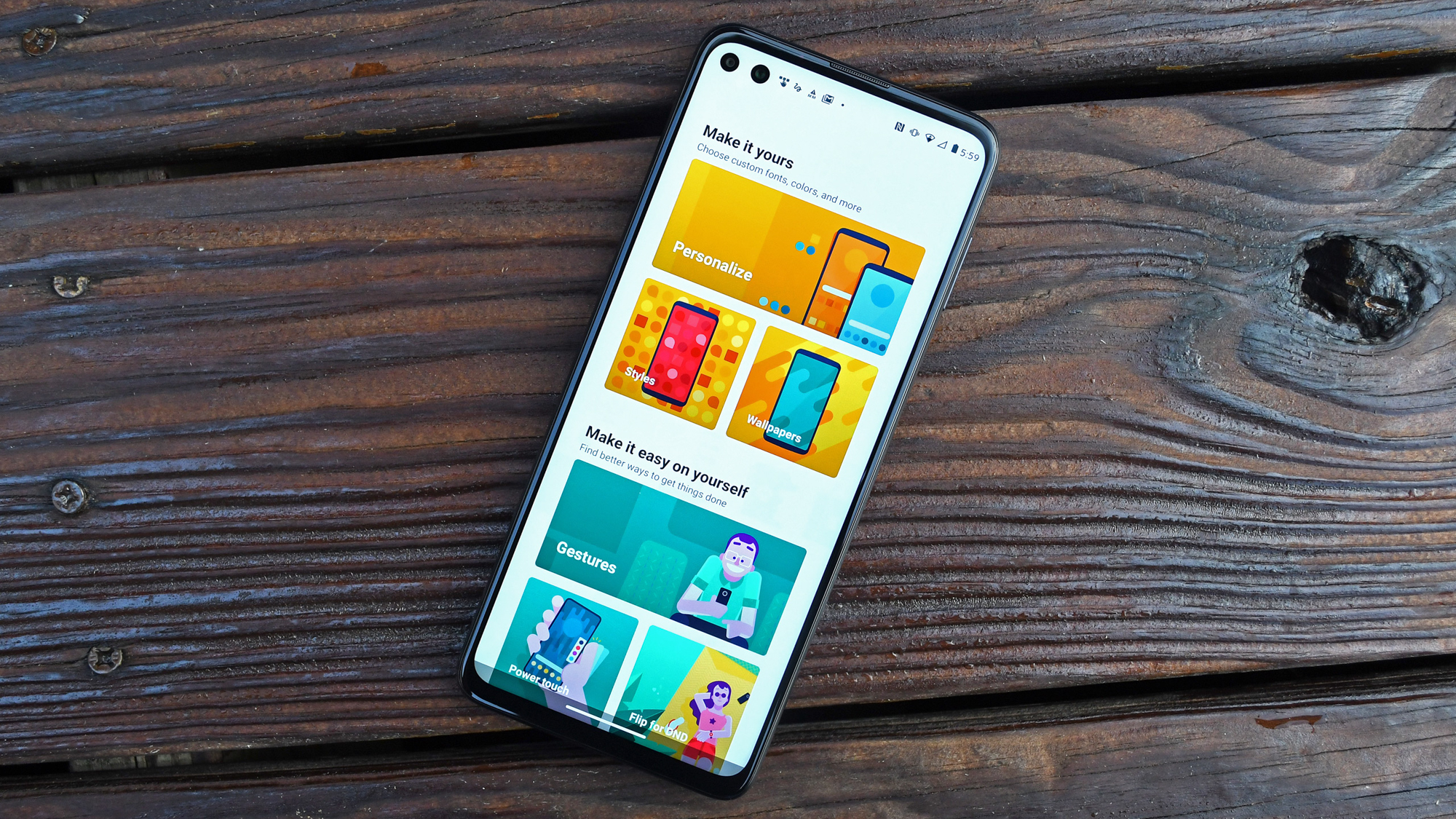
Under our colorimeter, the Motorola One 5G peaked at 118.4% of the sRGB color space in its default profile, and achieved a respectable Delta-E color accuracy score of 0.25. (The closer to zero, the more accurate the colors.) That’s very close to the also LCD-powered iPhone SE, which reached 112.9% — though if you really prefer saturated hues, the AMOLED-equipped Galaxy A51 outshined both, with its 212.2% result. The Motorola phone’s maximum brightness topped out at 590 nits — better than the A51’s 565 nits, but far off the Pixel 4a’s 681 nits, or the iPhone SE’s 653 nits.
It is worth pointing out that of all the devices I just mentioned, only the Motorola One 5G offers a 90Hz refresh rate. Faster refresh rates do indeed make phones feel a hair snappier, but personally, given the choice between a smoother display or an OLED one, I’d take the OLED option every time.
Motorola One 5G review: Camera
You get many cameras with the Motorola One 5G. On the back, they take the form of a 48-megapixel wide-angle lens, 8MP ultrawide, 5MP macro, and 2MP depth sensor. On the front, you’ll find not one but two selfie shooters: a standard 8MP optic, coupled with a 16MP ultrawide for group shots, or to capture more of your surroundings.
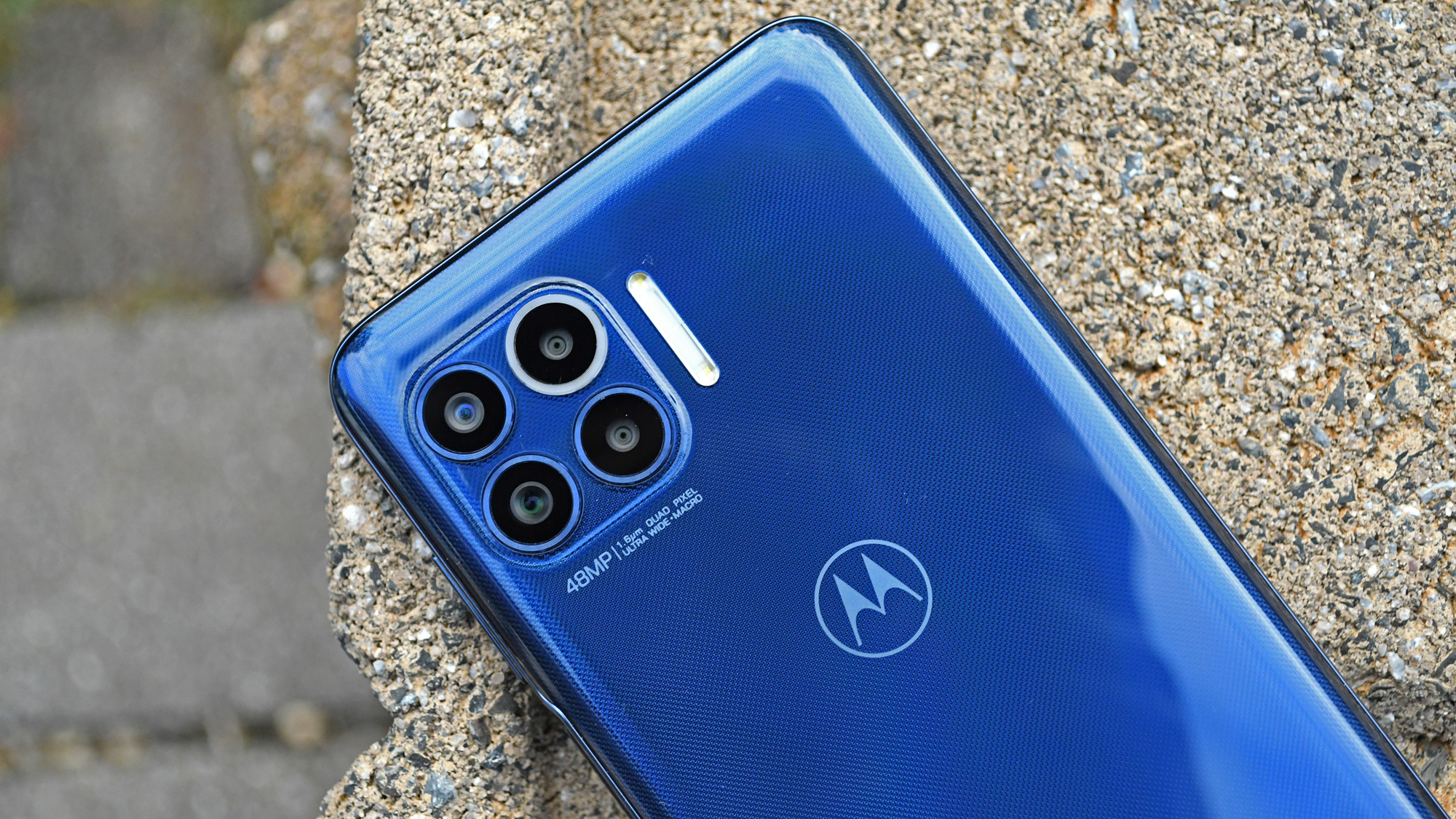
That’s six cameras across the front and the back, which is already slightly concerning, because phones at this price that tend to pack a plethora of optics rarely use any of them individually to any great effect. Unfortunately, the Motorola One 5G suffers from this quantity-over-quality problem.
We start with the phone’s 48MP main lens, which seems impressive on paper until you consider that by default it churns out fairly-average looking 12MP shots that don’t benefit from that wealth of megapixels. I used this camera to snap a picture of a leafy limb extending off a pot of flowers, and the results are serviceable, albeit a bit washed out, overly bright and lacking fidelity in the highlights. The Pixel 4a’s 12.2MP rear camera doesn’t suffer this problem, delivering an exquisite shade of gold in one of the leaves and nailing the earthy hue of the rustic wooden floorboards in the background.
I employed the same cameras again indoors, to get a sense of how the Motorola One 5G fares when light isn’t as readily available. Here, I was surprised to find the device hold its own; sure, the image it produces is darker overall than the Pixel’s, yet its colors are slightly more lush at the expense of some missing detail, particularly evident in the texture of the wood veneer on top of this desk. Nevertheless, not bad at all.
I wish I could say the same for the performance of the Motorola One 5G’s ultrawide camera. This shot of a backyard is one of the poorest I’ve ever seen from any mobile ultrawide lens; everything is hazy and dark, and I have absolutely no idea what’s happened in the middle of the frame. It’s almost as if someone’s smudged the center of a still-drying Polaroid. It’s so poor, it makes the Galaxy A71 5G’s attempt look like it’s come from a device that costs twice as much, even though it’s only $150 more expensive.
Motorola is very proud of the macro shooter on the Motorola One 5G, which even has its own ring flash that offers more direct illumination compared to a typical flash when you’re right up against a subject. Still, I’m not especially impressed by the quality of the macro camera itself, which struggled to focus compared to the macro shooter on the Galaxy A71 5G, while delivering less satisfying color overall.
I’m also not sure if the inclusion of a macro lens will matter much to anyone at all; personally, I’d have much rather had a telephoto for optical zoom, even if it would have necessitated a price increase for the phone.
Finally, we see a couple of selfies of yours truly, using the shallow depth-of-field portrait mode available on the Motorola One 5G and Galaxy A71 5G. Over the year’s I’ve noticed Motorola’s front-facing cameras tend to apply a slight yellowing to skin tones that I’ve never found flattering, though I suppose that’s not as serious a problem with this particular device. That said, I find the Galaxy’s rendition clearer, and its treatment of the bokeh around my shaggy hair more accurate.
Motorola One 5G review: Performance
The Motorola One 5G carries the same Snapdragon 765 chipset that’s been making the rounds in various mid-range 5G Android phones throughout 2020, as well as 4GB of RAM.
The 4GB of RAM would appear to be the weak link in this equation, as even your run-of-the-mill $500 Android handset tends to have at least 6GB these days. However, the Motorola One 5G has performed admirably in our testing, with no egregious instances of slowdown or lag.
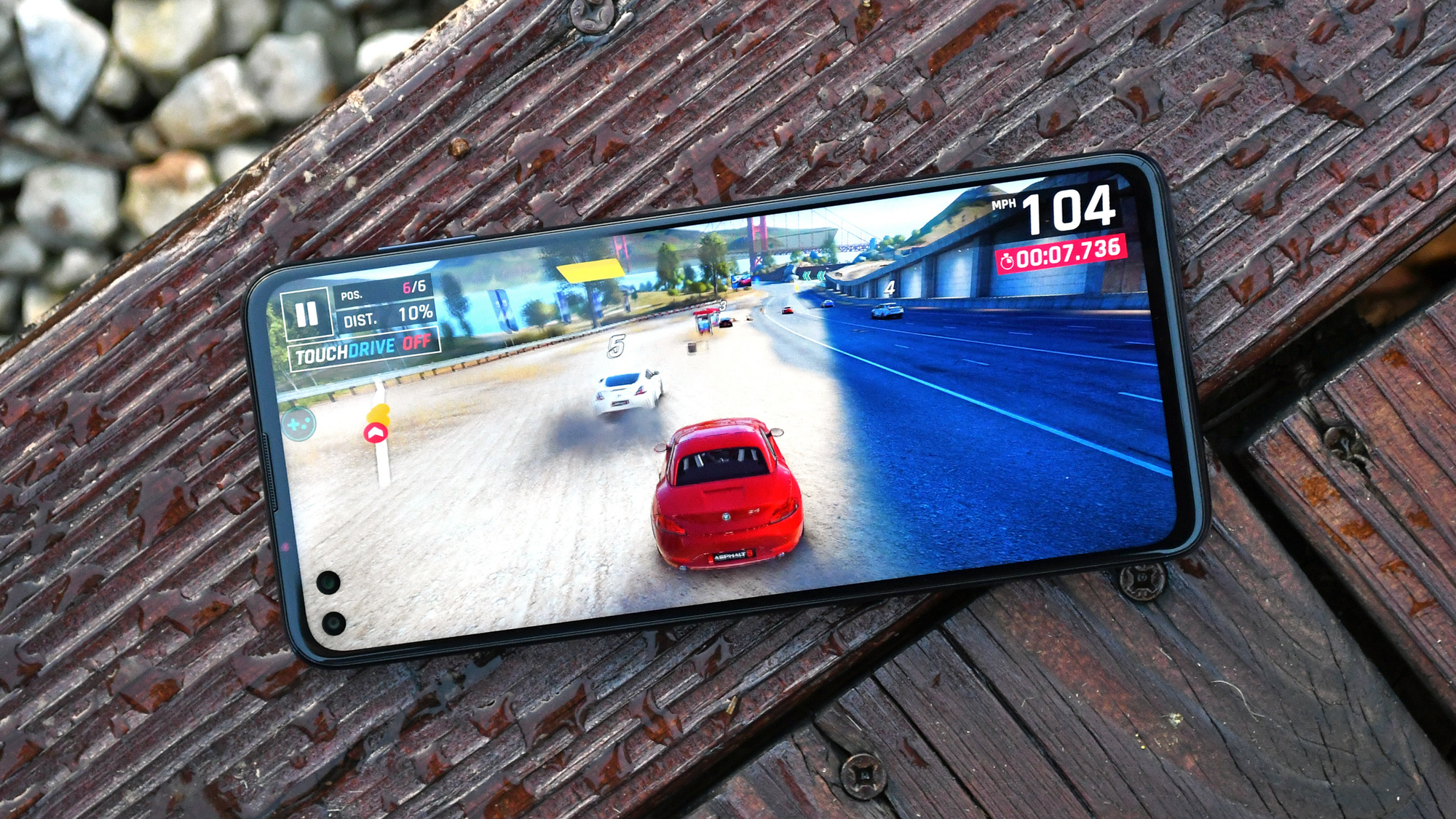
As with most other phones in this price range, you’re only likely to notice a lack in performance when playing games that are especially strenuous for the hardware. Titles like Asphalt 9 Legends run well enough, though a flagship device would certainly offer a smoother frame rate, sharper visuals and more plentiful graphical flourishes.
The Motorola One 5G turned in a very respectable 1,952 points in the multi-core edition of the system-wide Geekbench 5 test. That’s actually four points better than the OnePlus Nord, which benefits from Snapdragon 765G silicon — basically the same chip as the 765 that Motorola’s using, but slightly overclocked.
However, the 765G’s true appeal lies in its 20% faster graphics rendering compared to the stock chip, and it’s here that the Motorola One 5G comes up a bit short compared to the OnePlus Nord.
In 3DMark’s Sling Shot OpenGL ES 3.1 graphics test, Motorola’s handset achieved a score of 4,301, compared to the Nord’s 4,521. The Motorola One 5G was also outperformed by the Galaxy A71 5G in the GFX Bench Aztec Ruins Vulkan test for high-tier phones; here Motorola’s device topped out at 475 frames at 7.4 frames per second, compared to the A71’s 551 frames at 8.6 fps.
Motorola One 5G review: Battery life and charging
At 5,000 mAh, the Motorola One 5G’s battery is quite large. However, this phone lasted a merely decent average time of 9 hours and 14 minutes across four trials of Tom’s Guide’s custom battery test, where devices are timed as they endlessly load web pages over a data connection until they run out of juice.
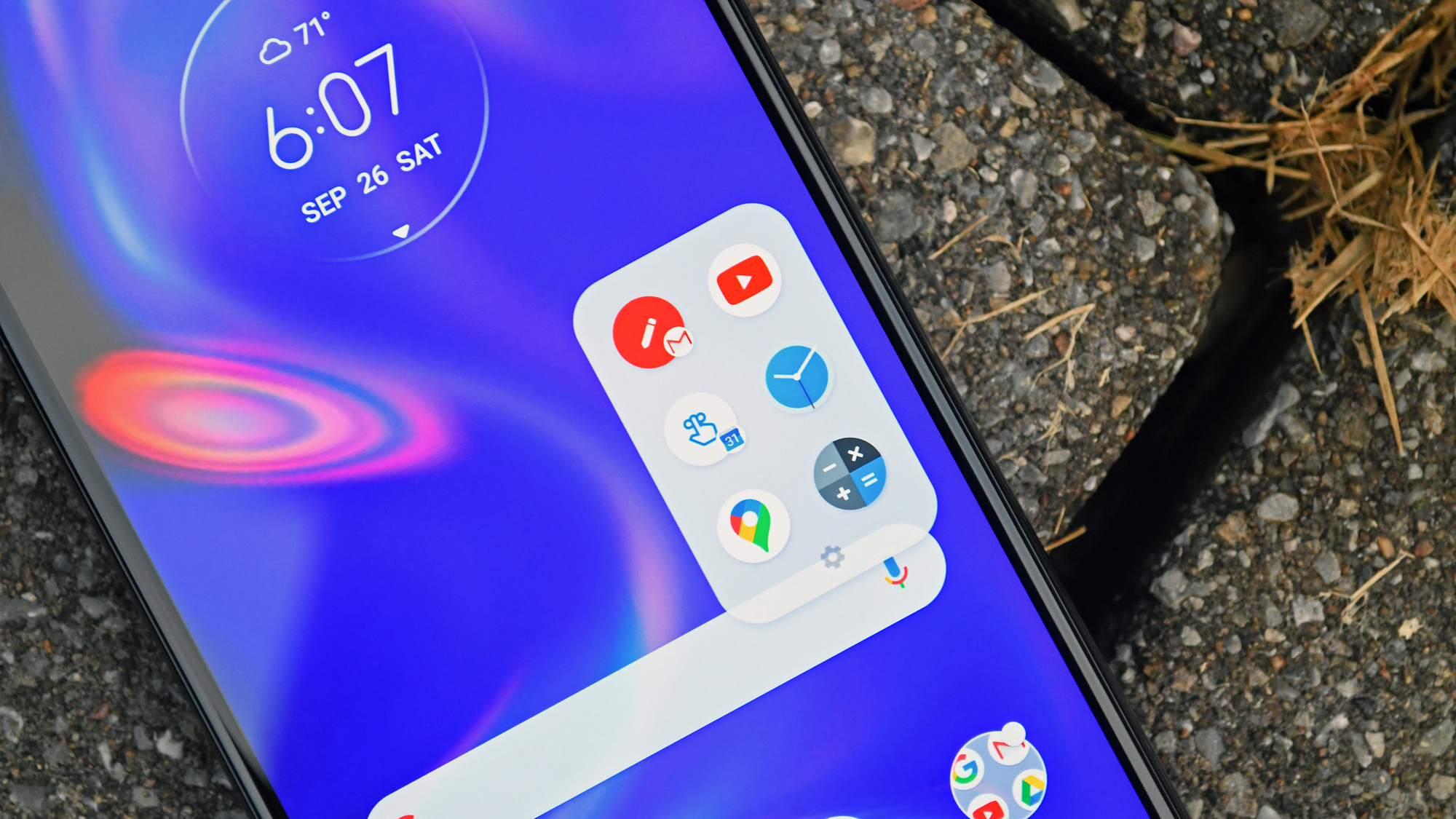
That runtime is somewhat disappointing, considering the Motorola One 5G seems to have a lot of qualities that should’ve made it a better performer in our test. Aside from the huge battery, the display is LCD, and LCD panels tend to be less power hungry than OLED ones. Additionally, the pairing of Qualcomm’s efficient Snapdragon 765 chip, coupled with a frugal 4GB of RAM, should’ve meant better things for longevity.
The Motorola One 5G doesn’t charge especially quickly either, with a meager 15W adapter included in the box. That got this device to 34% capacity after a half-hour of charging.
A 15W brick might be sufficient for smaller phones with batteries that are half the size of the one inside Motorola’s mid-range 5G device, but here it’s woefully under-equipped for the task.
Motorola One 5G review: Software
The Motorola One 5G ships with Android 10 pre-installed, which is already out of date, now that Android 11 is out. This wouldn’t be particularly worrisome if not for the fact that Motorola is only guaranteeing one software update for this device, as it does with all its cheaper phones. In other words, once your Motorola One 5G hits Android 11, you’ll probably never see another major update, barring small patches and security enhancements.
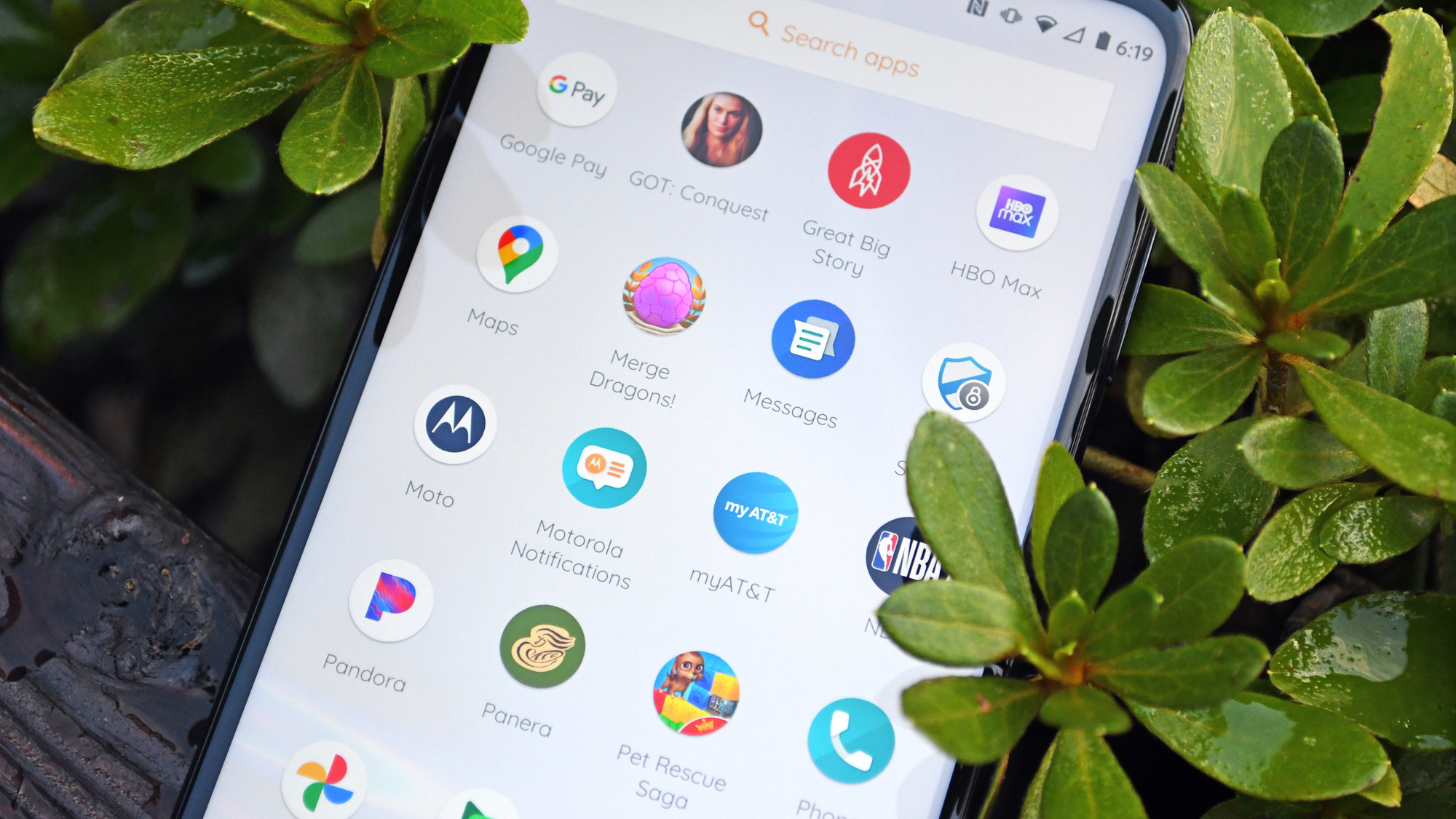
To add insult to injury, the Motorola One 5G is filled to the brim with bloatware. It’s been quite a while since I’ve used an AT&T-exclusive handset, and in that time I’d forgotten how much unwanted software floods the app drawers on these phones. While lots of these offending apps can be uninstalled, some, like Amazon Shopping, DC Universe and even Game Of Thrones: Conquest of all things can only be disabled — meaning they’ll still consume space on your device’s onboard memory, even if you never open them.
I counted 31 examples of bloatware in total. And that’s not including the AT&T-branded services here, some of which are arguably frivolous. (There’s something called DriveMode, which is so visually sparse, it looks like it was whipped up in an hour.)
Outside of these annoyances, Android 10 on the Motorola One 5G is pretty much your standard-fare Motorola experience, which is to say that it doesn’t exhibit many modifications to core Android, save for some extra gestural shortcuts and light enhancements. You have your chopping motion to fire up the flashlight and twisting motion for the camera, which have been present in almost every Motorola smartphone dating back to the start of the decade. There’s also a theming engine called My UX, which allows you to change system fonts, icons and the accent color, though it’s no different in practice from what Google started implementing in its Pixels last year.

One new addition is Double Tap — a feature where you can literally double tap the Motorola One 5G’s side-mounted fingerprint sensor to call up six actions or apps of your choosing. It’s a handy feature to have, though how much utility you extract from it will likely differ on a user-by-user basis. In my case, I had to remind myself it was there at all.
Motorola One 5G review: Verdict
If you’re pining for a 5G phone for the absolute least amount of money and you happen to belong to AT&T or are willing to switch to get it, the Motorola One 5G is a decent phone. It performs well enough most of the time, and there’s nothing egregiously wrong with it.
However, I struggle to see why anyone would settle for Motorola’s cheapest 5G phone when so many other, better options exist for slightly more money.
The Samsung Galaxy A51 and A71 5G are far more well-rounded devices, with brighter, bolder displays and superior multi-lens camera systems. The OnePlus Nord (provided you can get it) is a performance champ for the money, offering up to 12GB of RAM and flagship-caliber smoothness. And the Pixel 4a 5G is likely to retain the Pixel 4a’s stellar software and flagship-caliber photography.
Add it all up and the Motorola One 5G, with its bulky, tacky design and across-the-board mediocrity, feels like a phone that exists merely to satisfy a price bracket; nothing more, nothing less. And though it’s among the cheaper options, this isn’t a case of getting more than you pay for.
Adam Ismail is a staff writer at Jalopnik and previously worked on Tom's Guide covering smartphones, car tech and gaming. His love for all things mobile began with the original Motorola Droid; since then he’s owned a variety of Android and iOS-powered handsets, refusing to stay loyal to one platform. His work has also appeared on Digital Trends and GTPlanet. When he’s not fiddling with the latest devices, he’s at an indie pop show, recording a podcast or playing Sega Dreamcast.
